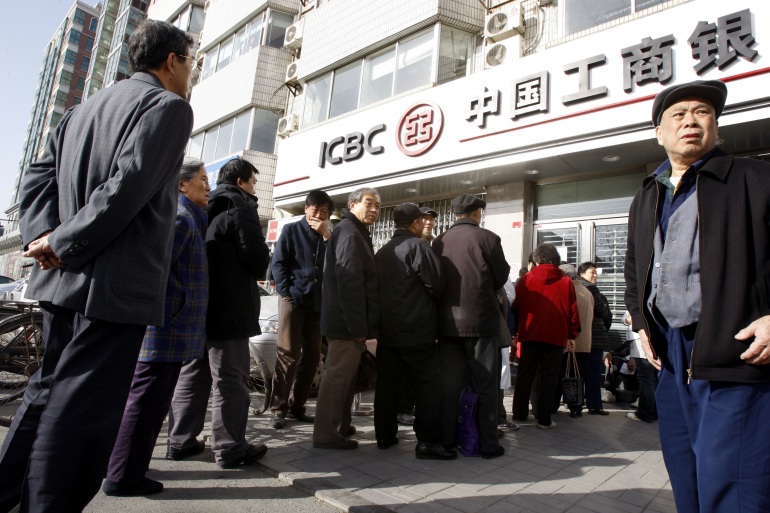China's Bear Stearns moment

Local residents wait outside a branch of the Industrial and Commercial Bank of China (ICBC), in Beijing.
On Sunday March 16 in 2008, then US Treasury Secretary Hank Paulson and the Federal Reserve orchestrated a rescue package for the failing investment bank Bear Stearns. They blessed a union between Bear and JP Morgan, which was in much better financial shape thanks to a bit of hand-holding from Uncle Sam.
The Fed guaranteed $US30 billion worth of mortgage securities on Bear’s books and JPMorgan assumed all of Bear’s trading positions the next Monday when the market opened. A financial calamity, at least for the time being, was averted.
“I am prepared to do anything,” said Paulson in his book On the Brink. “…if there is any chance of avoiding this failure. We need to take it.”
China just had its own 'Bear Stearns moment' this week, when a 3 billion yuan trust product narrowly avoided default after a joint rescue effort from banks and the local provincial government. Some of the Chinese bankers involved in the rescue described the event as a “scary 24 hours”, according to Chinese financial magazine Caixin.
Admittedly, the trust product ‘Credit Equals Gold No 1’ is much smaller than Bear’s product was, but both rescue packages have eerie similarities.
Governments and big banks have stepped in to rescue failing financial institutions at a time when there are widespread and deepening concerns about the health of financial markets. In the US, it was the health of the subprime mortgage securities market and in China, local government debts and the shadow banking sector.
The trouble started more than two weeks ago, when the trust product, which has been used to finance the development of a coal project in Shanxi province, told its investors that they were unlikely to get their money back.
The public announcement caused quite a stir in the Chinese financial market. The 3 billion yuan trust product is likely to be the largest default in the sector the country has seen. More worrying for the market is the fact that two of China’s largest financial institutions are likely to be involved in this messy situation.
The issuer of the trust product is China Credit Trust, one of the largest trust funds in China with more than 340 billion yuan in assets. Even more concerning is the fact that the Industrial and Commercial Bank of China, which is the world’s second largest bank by market capitalisation, is the retailer of the product.
People waited anxiously to see whether this trust product could become the first default in China’s shadow banking sector in 2014.
This year will be a crunch year for many people. In 2011, the National Audit Office reported that 53 per cent of local debts, which include trust products, would be due in three years’ time. That is this year.
A joint rescue effort between China Credit Trust, the Industrial and Commercial Bank of China and the Shanxi provincial government saved the day.
In the short term, this is a victory for officials and banks who want to avoid becoming the first to default on their debts. China’s trust sector is still small but the shadow banking sector, of which it is a part, contributed nearly as much as bank loans to credit growth.
“But this is not an outcome that anyone should be particularly comfortable with. Occasional, small defaults – particularly on risky, high-return products such as this – are preferable to the large scale delinquency that will follow if investors see little need to pay attention to credit risks” warns Capital Economics, a London-based macro-economic consultancy.
Investors have been spared from the pain of a drastic haircut. But the question of moral hazard will be a big issue confronting Chinese leaders this year just as it was for Hank Paulson and Timothy Geithner five years ago.
How China manages its bubbling debt issue will be one of the biggest risk factors for its economy and the world at large.
Follow Peter Cai on Twitter: @peteryuancai
Subscribe to the China Spectator newsletter: http://bit.ly/ChinaSpec
















